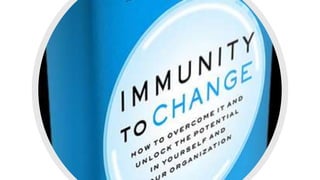Improving Self-talk
- 2. Unit 1—Adopting a Growth Mindset Unit 2—Focus on Strengths Unit 3—Regulating Emotions Unit 4—Reducing Stress Unit 5—Mastering Mindfulness Unit 6—Improving Self-Talk
- 5. Case Study Simone is a mature aged student in her first year of university. Simone is concerned about the amount of time she studies. The issue of concern is the difficulty she has studying the chapters set for reading. She is finding that material particularly difficult but has heard that operant conditioning may help. Desired behaviour: She wants to study between 6pm and 7:30pm each night at least four times a week.
- 6. Case Study • At 6pm Simone sits down at the kitchen table with her text in front of her. Ten minutes into her study hour she looks up at the fridge and sees a plate of pudding looming in front of her. She begins to feel hungry. She eats the pudding and her hunger is allayed. • She sits down at the table and finds herself yawning. The coffee filter is on the bench and in front of her. She gets up and puts the kettle on the boil. While she is waiting, she decides to catch a few minutes of news on TV. The newsreader is reporting a story of a scandal involving a famous person. Six minutes later she hears the kettle boiling. She rushes back to the kitchen and pours water into a coffee filter. Then rushes back to the TV room to catch the end of the story. • Returning to the kitchen, she looks at the clock – where has all the time gone, it is now 35 minutes into her study hour. She remembers her favourite show on TV is going to start at 7pm and her planned study hour and a half has been a failure.
- 7. Case Study • Simone has monitored her study behaviour for the past week. Her study time in minutes and the number of times she left the table for any reason was: • Monday 10 min (5) • Tuesday 8 min (6) • Wednesday 24 min (3) • Thursday 10 min (5)
- 8. Analysis 1. What are the factors triggering Simone’s behaviour. 2. What are consequences of continuing this behaviour? 3. How might you consider getting rid of the undesired behaviour? 4. How might Simone acquire and maintain the desired behaviour?
- 9. Self-talk Summarise the current situation in the first row of the table. Predict what behaviour is likely to follow from Simone’s current self-talk. Then dispute Simone’s self-talk – try to formulate new self-talk that is true and facilitates goal attainment (i.e., study behaviour). Current self-talk Current feelings Current behaviour Consequences Functional self-talk Functional feelings Desired behaviour Consequences
- 10. Self-talk 1. Individually, choose a situation from your own experience that is problematic for you. Identify your self-talk, feelings, behaviour, and consequences for you of that behaviour. 2. Then have your group members help you to identify more functional self-talk (i.e., self-talk that is true to facilitate goal attainment). Current self-talk Current feelings Current behaviour Consequences Functional self-talk Functional feelings Desired behaviour Consequences
- 13. False assumptions • We cannot succeed with adaptive challenges without recognizing that we are putting at risk what has been a very well functioning way of taking care of ourselves. • When we overcome an immunity to change we stop making what we have come to see is actually a bad bargain.
- 14. Visible Commitment What I know I want to do Example: To empower my team members and give them more time for high level work. 1. Immunity to Change Model
- 15. What I am doing instead The actions I am taking that seem to be contrary to the original commitment. • Getting into the detail of projects • Taking over projects if they don’t seem to be moving quickly enough • Spending a lot of time solving problems for staff • Writing up details plans and spreadsheets 2. Immunity to Change Model
- 16. Hidden competing commitments What other things seem to be important that are working to undermine my visible commitment? • perfectionism • avoiding risks • solving technical problems 3. Immunity to Change Model
- 17. Big assumptions Overarching assumptions that in some way validate the hidden assumption and negates the original assumption I assume that if I don’t do the work myself then projects will necessarily fail or be substandard, then I will be a failure as a leader, and then... 4. Immunity to Change Model
- 18. Create your own immunity x-ray 1 Commitment (improvement goal) 2 Doing/not doing instead 3 Hidden competing commitments 4 Big assumptions Worry box: (Kegan & Laskow Lahey)
- 19. Multiple approaches to overcome immunity • Construct testable big assumptions (BAs) • Unpack the big assumption • If a BA is true then re-examine the original commitment (is it realistic?) • If the BA is false, then the competing commitments become irrelevant • Envisage success – build self-efficacy • Monitor - self / team / colleague observation
- 20. Shifting to unconsciously released • Unconsciously immune • Consciously immune • Consciously released • Unconsciously released
- 21. Catch your self-talk. What are you telling yourself? If this helpful or unhelpful? Change the script.
- 22. Unit 1—Adopting a Growth Mindset Unit 2—Focus on Strengths Unit 3—Regulating Emotions Unit 4—Reducing Stress Unit 5—Mastering Mindfulness Unit 6—Improving Self-Talk






















